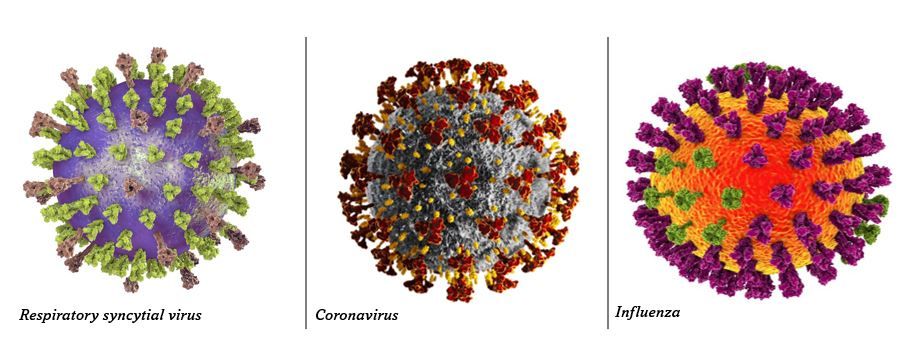- Clinical Technology
- Adult Immunization
- Hepatology
- Pediatric Immunization
- Screening
- Psychiatry
- Allergy
- Women's Health
- Cardiology
- Pediatrics
- Dermatology
- Endocrinology
- Pain Management
- Gastroenterology
- Infectious Disease
- Obesity Medicine
- Rheumatology
- Nephrology
- Neurology
- Pulmonology
CDC Reports Flu Activity at 10-year High as COVID-19 and RSV Fill Hospital Beds

Influenza activity in the US is higher than it has been at this time of year in a decade. According to the Centers for Disease Control and Prevention's (CDC) weekly flu surveillance report released on Friday, November 18, flu is responsible for 4.4 million cases, 38 000 hospitalizations, and 2100 deaths across the country.
The early surge in flu cases and hospital admissions in particular is further threatening the capacity and staffing at hospitals already strapped by early elevations in cocirculating respiratory viruses including respiratory syncytial virus (RSV) and COVID-19. The latter, according to the CDC, still contributes to more than 3000 hospital admissions daily while RSV has made headlines for weeks as US children’s hospitals are overwhelmed and resorting to temporary treatment structures used during the height of the COVID-19 crisis. The trio of viruses, complications from which are more likely to affect children and older adults, are being collectively referred to as a “tripledemic.”
COVID-19 still contributes to more than 3000 hospital admissions daily while RSV has made headlines for weeks as US children’s hospitals are overwhelmed and resorting to temporary treatment structures used during the height of the COVID-19 crisis.
Speaking to the Associated Press, Dr Mark Griffiths, emergency department director of a Children’s Health Care of Atlanta hospital, calls this year’s respiratory disease mix a “viral jambalaya,” with the census in children’s hospitals in his locale at least 30% higher than usual for this time of the year.
Hard-hitting early arrival
Typically, influenza infection rates don’t begin escalating until December or January, the CDC says. More than half of US states, however, now report either high or very high levels of flu, according to the report. Those 27 states lie mostly in the South and Southwest, but numbers are growing, too, in the Northeast, Midwest, and West.
Influenza A(H3N2), the predominant variant in circulation, has been detected in 76% of more than 3500 respiratory samples that have tested positive for the virus subtype. The H3N2 variant has been linked with flu seasons more severe for children and older persons in the past—a pattern already clear this year, the CDC says.
"Flu hospitalization rates right now are the highest we've seen at this time of year in the past decade," said Lynnette Brammer, an epidemiologist and team lead of CDC's domestic influenza surveillance team, in a statement.
Overall, approximately 8 people per 100 000 population are being hospitalized. Not surprisingly, rates are highest among adults aged ≥65 years. In fact, at 18.6 per 100 000 the hospital admission rate for this age group is more than double the general population. Somewhat lower but still much higher than the population at large, the hospitalization rate for children younger than age 5 years is 13.6 per 100 000.
Overall, approximately 8 people per 100 000 population are being hospitalized. Not surprisingly, rates are highest among adults aged ≥65 years. In fact, at 18.6 per 100 000 the hospital admission rate for this age group is more than double the general population.
Nearly 6% of outpatient visits reported last week through the CDC’s Influenza-like Illness (ILI) Surveillance Network were for respiratory illnesses that included fever plus cough or sore throat, significantly above the national baseline of 2.5%. The percentage of ILI visits is increasing for the 0-4, 25-49, 50-64, and 65+ years age groups, although they appear stable at this time among those aged 5-24 years.
Testing by federal health officials shows that most of the viruses detected are similar to the strains in the 2022-2023 season’s flu vaccine, the CDC said. When that vaccine was tested earlier this year, it was found effective at reducing flu-related hospitalizations.
“Vaccination helps prevent infection and can also prevent serious outcomes in people who get vaccinated but still get sick with flu,” the CDC said. Generally the vaccine is 40% to 60% effective at preventing illness entierly. People who do become ill are less likely to require hospitalization or to die
The CDC recommends that everyone 6 months or older get a flu shot. Children younger than age 8 years who are receiving the vaccine for the first time should get 2 doses for the best protection.
One infectious disease specialist urged Americans to take precautions before gathering for Thanksgiving, including avoiding public crowds, getting COVID-19 tests before they meet, and wearing masks indoors — particularly if you are old or frail, or will be around someone who is.
